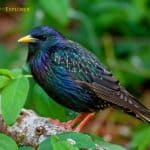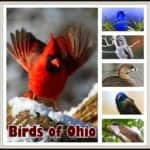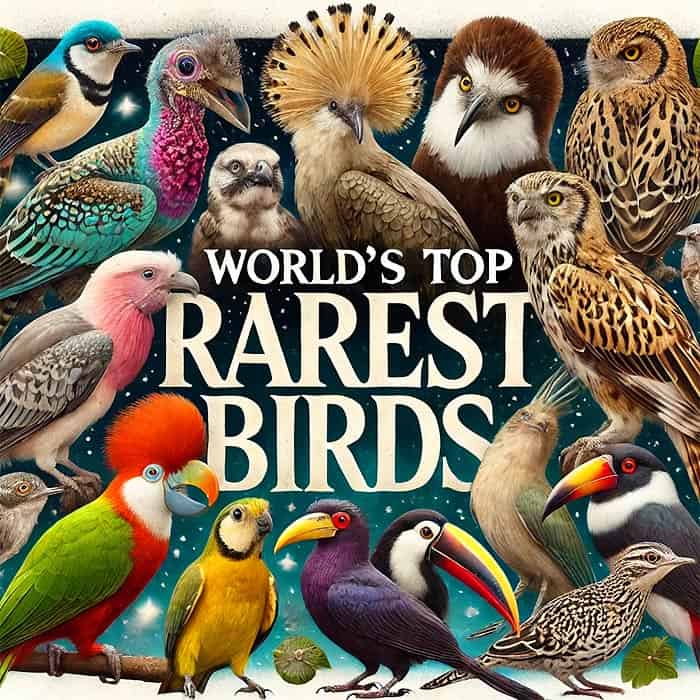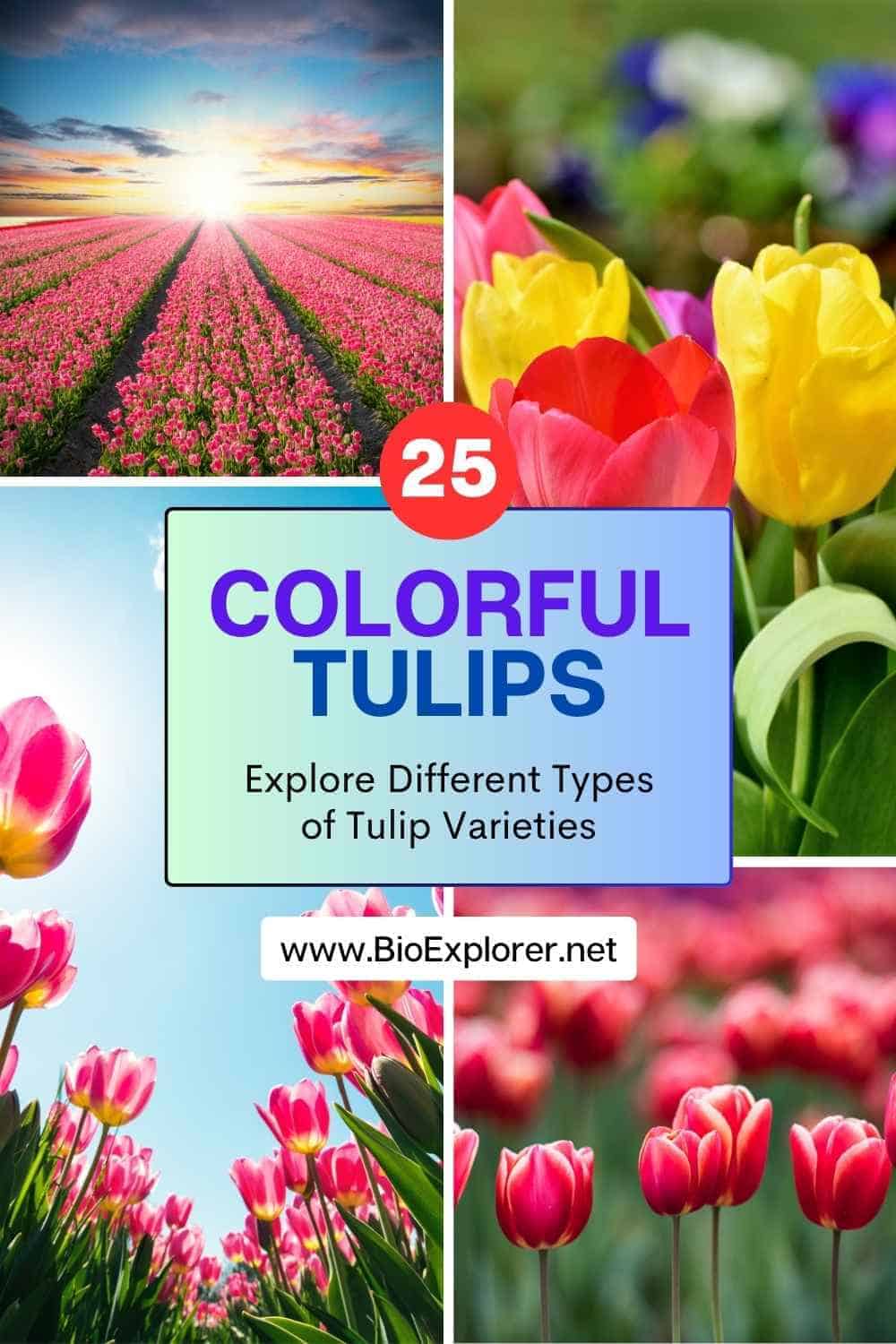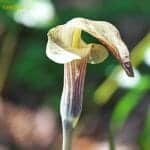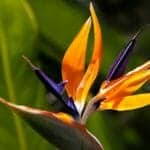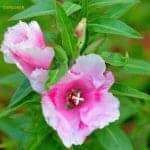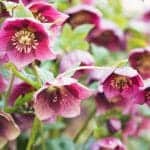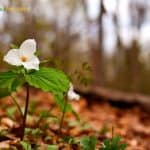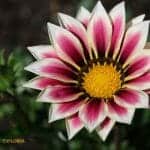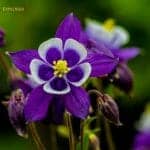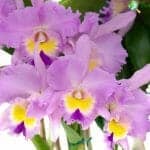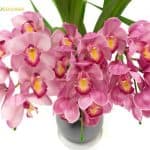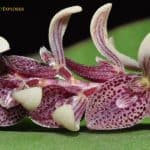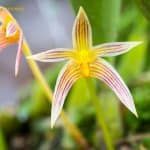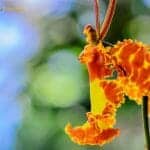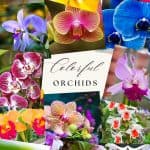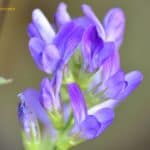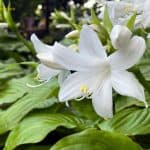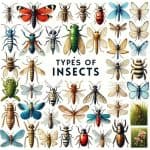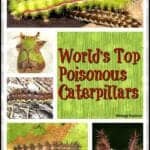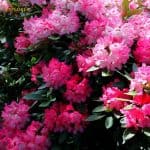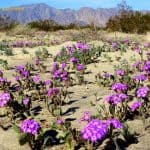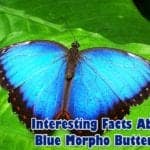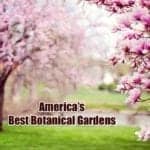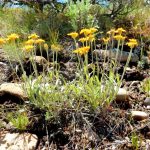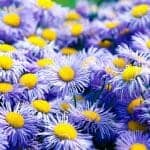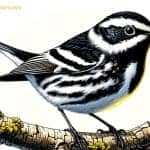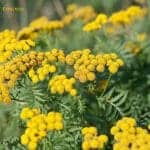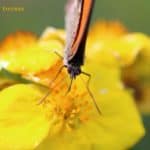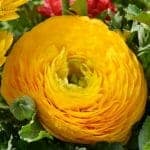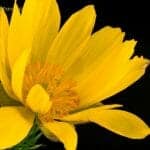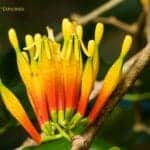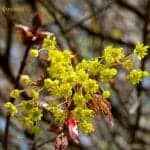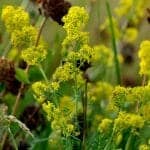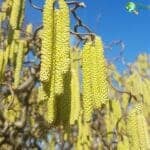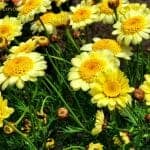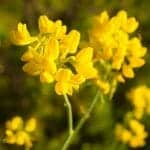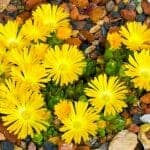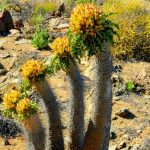the red flower - search results
If you're not happy with the results, please do another search
Great-tailed Grackle
The Great-tailed Grackle is a large, striking blackbird known for its glossy, iridescent males with long, keel-shaped tails and bright yellow eyes. Females are noticeably smaller and brown with darker wings and tails. Native to the Americas, these highly social birds thrive in open areas near water, including farmland, city parks, and suburban lawns, and have rapidly expanded their range across North America in recent decades.
Great-tailed Grackles are famous for their raucous flocks and wide variety of vocalizations, from whistles to harsh rattles. They are highly flexible and persistent problem-solvers, able to adapt quickly to new environments and even solve complex puzzles.
European Starling
The European Starling is a medium-sized, black songbird with short, triangular wings, a short tail, and striking iridescent plumage speckled with white, especially in winter. During breeding season, adults display a yellow bill and a purple-green sheen. Native to Europe, Asia, and North Africa, starlings were introduced to North America in the 1890s and now number over 200 million. Highly social, they form enormous flocks and perform mesmerizing aerial displays called murmurations. Starlings are accomplished mimics, able to imitate other birds and even human sounds. They are aggressive cavity nesters, often outcompeting native species for nesting sites.
15 Outstanding Birds of Ohio
At present, Ohio has 5 distinct geographical regions from Lake & Till Plains to Appalachian Plateau and Bluegrass Region. Find 15 Best Birds of Ohio here.
Spider Monkeys
Spider monkeys comprise 7 New World primate species adept at brachiating through Central and South American rainforest canopies, endangered due to habitat destruction. Their spindly prehensile tails, flexible shoulder joints, hook-like fingers and fusion-fission social groups represent unique adaptations for foraging canopy fruits.
Top 26 Washington Birds
Explore the overview of 26 must-see top Washington Birds species including facts on goldfinches, owls, hawks, finches and more. This comprehensive guide will help with identification of birds of Washington.
What Is Biological Magnification?
Understand biological magnification - how toxins accumulate exponentially up food chains to dangerous levels in top predators. Unpack biomagnification impacts, sources, and solutions.
What Animals Live In Rainforests?
Discover the incredible biodiversity of the tropical rainforest. Dive deep into the habitats of rainforest animals, from the elusive jaguar to pink-toe tarantulas.
Top 25 Rare Birds of All Time
Explore the 25 rare birds in the world, including the Kakapo and Philippine Eagle, with stunning visuals, unique facts, and their incredible rare bird habitats.
What Do Squirrels Eat?
Squirrels are in the same family as marmots, prairie dogs, and chipmunks. Explore what do squirrels eat, squirrel's diet by types, what eats squirrels & more.
What Do Kangaroos Eat?
Kangaroos are marsupials that can only be found in Australia. Kangaroos are mostly herbivores. Explore what do kangaroos eat in detail by their types & more.
What Do Sloths Eat?
Sloths are arboreal creatures commonly found in South & Central America. Explore what do sloths eat, diet by types, how often, how much, & what eats sloths.
Scimitar Oryx
Learn about the endangered scimitar-horned oryx, a striking Saharan antelope brought to extinction in the wild by 2000. Discover how urgent conservation efforts and captive breeding programs for this iconic desert-adapted Oryx dammah species have kept its future hopes alive against the odds.
Top 18 BEST Tundra Animal Adaptations
The coldest areas on Earth, such as regions close to the North Pole and the South Pole, have unique features. Here are the top 18 tundra animal adaptations.
What Do Peacocks Eat?
Peacocks are flashy birds renowned for their colorful tail plumage. Explore what do peacocks eat, their diet by types, and what eats peacocks & more here.
Top 25 Colorful Tulips: A Rainbow in Your Garden
Explore 25 colorful tulip s, from classic hybrids to rare species. Learn how to design, plant, and fun facts for a colorful spring garden.
Jack-in-the-Pulpit
Jack-in-the-Pulpit (Arisaema triphyllum) is a charming wildflower native to midwestern and eastern North America but easily grown in shady gardens elsewhere. The flower comes in purple, greenish-white, and green shades. Its bloom forms a club-shaped cluster of scarlet or red berries in autumn.
Bird of Paradise
The Bird of Paradise is also known as a crane flower because it looks like a graceful bird with a long neck. There are about 5 different species of this plant. Its brightly colored flowers and long stem look like a bird with a tuft of brightly colored flowers and a pointed beak on its head.
Clarkia
Clarkia amoena, also known as the satin flower, is native to western North America from central California to British Columbia. The four-petalled flowers (2 to 3-inches in diameter) are red, pink, or lavender, sometimes with a spot or blotch at each petal's base.
Hellebore
Hellebore is so pretty and straightforward that it has a place in almost any landscape. Its exquisite cup- or saucer-shaped blooms in white (sometimes speckled), maroon, yellow, or pink remain on the plant for many months, even after the petals have dropped.
White Trillium
White Trillium is a perennial herb that belongs to the family Melanthiaceae. This species is native to Eastern North America and can grow to 1 to 1.5 feet. Trillium grandiflorum is used in a study to determine the negative impact of deer on the herb population.
Gazania
Gazania is an annual and perennial plant known for its extreme tolerance to heat and drought. The flowers of this species are orange with black eyes at the base and orange-brown discs. Hybrid varieties come in various additional hues, including shades of white, bronze, orange, or yellow.
Columbine
Columbine, also known as Aquilegia and Grandmother's Cape, is a genus of around 60 to 70 species of grassland perennial plants native to temperate climates in North America, Europe, and Asia. Columbine is a common garden flower in many colors, including purple, pink, white, red, and yellow.
Cattleya
Cattleya orchids display a fantastic look that several plant lovers could not resist. Cattleya belongs to a genus of Cattleya spp. in the family Orchidaceae. There are currently 35 natural hybrids and 46 recognized species of the genus Cattleya. These orchids are native to the tropics like South and Central America. The blooms can reach a diameter of 8 inches, with colors ranging from white to blue, yellow, red, purple, and orange.
Cymbidium
Cymbidium, commonly called boat orchid, is a genus of about 70 species of tropical and subtropical orchids in the Orchidaceae (orchid) family. Cymbidium orchids are available in colors including green, cream, yellow, burgundy, red, brown, apricot, orange, pink, and white.
Pleurothallis
Pleurothallis is a genus in the family Orchidaceae (orchids) native to America's temperate and tropical regions. Several species are called bonnet orchids and are cultivated for their showy hooded flowers. The blossoms can have a delicate or thick structure; cymes can be single or multi-flowered, very long to short. Currently, more than 1000 species of flowering plants are described.
Bulbophyllum
The Bulbophyllum genus consists of mainly lithophytic and epiphytic orchids in the Orchidaceae family. Bulbophyllum orchids are found in various habitats in most of the world's warmer regions, including Latin America, South Asia, Africa, the West Indies, and several islands in the Pacific and Indian Oceans. The flowers are scented with small green, brown, or yellow petals.
Butterfly Orchid
Butterfly orchid is a common name for numerous species of orchid, including the genera Platanthera and Psychopsis. Some are grown as ornamental plants because of their attractive flowers. Well-known species are the small white-flowered orchid (Platanthera bifolia) and the large butterfly orchid (Platanthera chlorantha) with larger greenish-white blooms.
Top 18 Amazon Rainforest Plants
The Amazon Rainforest is considered the home of the most diverse species in the world. Learn the top 18 Amazon rainforest plants & their details here.
25 Must-See Colorful Orchids
Discover 25 stunning colorful orchids, from vibrant blues to fiery reds. Explore their unique features, habitats, and the vital role of color in orchid ecology.
Alfalfa
Learn about alfalfa (Medicago sativa), its flower characteristics, cultivation practices, environmental benefits, and economic importance in this comprehensive guide.
August Lily
Discover the August Lily (Hosta plantaginea): a perennial with fragrant white flowers, medicinal properties, and ecological benefits, perfect for shaded gardens and borders.
Insect Orders
Explore 28 major insect orders under the class Insecta (diverse group of arthropods).Insects play vital roles in ecosystems, from pollination and decomposition to serving as food for other animals.
World’s Top 15 Poisonous Caterpillars
There are many kinds of poisonous caterpillars; several caterpillars develop chemical warfare - they become poisonous. Here are 15 species of poisonous caterpillars from around the world.
Azalea
Discover the vibrant world of Azaleas in our comprehensive guide. Learn about different types, ideal planting conditions, care tips, and how to handle common pests and diseases. Perfect your green thumb with our step-by-step guide to planting and propagating these stunning shrubs.
36 Most Colorful Birds In The World!
The most colorful birds give you a clue of the diversity in the world of birds (Aves). Here are the world's beautiful top 36 birds and their features.
Order Zingiberales / Ginger, Orchidantha & Banana Plants
Zingiberales' order comprises several species of great economic importance, like the banana and the ginger. Members have almost restricted distribution to tropical regions. Zingiberales species have ptyxis, large flowers, attractive colors, and inferior ovaries. Banana, Bird-of-paradise, Orchidantha, ginger, costus, and Canna lily are examples of Zingiberales order.
Desert Sand Verbena
The Desert Sand Verbena is a native species of the southwestern United States and Northern Mexico, growing in the sandy areas of the desert. The flowers are trumpet-shaped. The flowers are fragrant with 5 lobes.
Top 21 Facts About Blue Morpho Butterfly
The Blue Morpho butterfly is the most well-known species in the butterfly genus Morpho. Learn the top 21 facts about the Blue Morpho butterfly here.
America’s 15 Must-Visit Botanical Gardens: Discover Them Today!
From exquisite blooms to exotic plants, our guide to America's top 15 botanical gardens promises enchanting adventures. Don't miss out on these beautiful, botanical must-sees!
Cosmos
Cosmos are annual flowering plants native to Mexico, characterized by brightly colored, daisy-like blooms borne on long, slender stems. Cosmos is a species of flowering plant in the Asteraceae (sunflower) family native to the meadowland and scrubland of Mexico, where most species are found.
Lemon’s Rubberweed
Hymenoxys lemmonii is a perennial herb of the Asterceae family. The plant can grow to a height of 15-20 inches. The plants of the genus Hymenoxys contain sesquiterpene lactone hymenoxon, which is toxic to sheep.
Monte Cassino
Loved by butterflies, gardening enthusiasts, and florists, this remarkable flower Monte Cassino spotlights delicate clear white clouds of dainty daisies with a yellow center that hovers over neatly trimmed small green leaves that form a sturdy, bushy clump. The florets on the central disc are generally yellow, surrounded by thong-shaped ligulate florets in white, purple, blue, or pink shades.
Elfin Woods Warbler
Shadow, a timid highland insectivore, the Elfin Woods Warbler (Setophaga angelae), narrowly targets mature humid dwarf forest strangely resembling this tiny bird's stunted, wind-sculpted features. Understand why accelerated warming and upslope development threaten to erase prime island refugia critical to this range-restricted species' survival.
Types of Lilies
Discover the stunning beauty of different types of lilies. From oriental hybrids to unique lily species, learn about the diverse world of lily varieties.
Tansy
The tansy (Tanacetum vulgare) is a perennial herbaceous plant of the Tanacetum genus in the Asteraceae family, native to temperate areas of Asia and Europe. Tansy is a flowering plant with finely serrated compound leaves and yellow button-shaped flowers.
Silverweed
Potentilla anserine, also known as silverweed, goosegrass, or silverweed cinquefoil, is a prostrate perennial herb in the Rosaceae (rose) family. Silverweed is the only plant in the Potentilla genus with pinnate compound leaves and individual flowers on separate stems.
Ranunculus
Ranunculus japonicas is a perennial herb of the family Ranunculaceae. It is a wild grass native to Japan. Ranunculus flowers add beauty and vibrancy to any garden. These perennial herbaceous plants, best known for their fragile rose-shaped petals, produce long-lasting cut flowers.
Pheasant’s eye
Adonis vernalis, commonly known as pheasant's eye features upright, columnar, branching, leafy stems that average 8 to 24 inches tall. The typical width of the plant is 6 to 12 inches. The blooms are small and resemble buttercups, varying in color from yellow, orange, scarlet, or purple.
Pansy
Pansy is one of the first heralds of spring in gardens, but its ability to thrive in cold climates makes it a staple for fall planting and garden beds. Garden pansy (Viola × wittrockiana) is a large-flowered hybrid plant grown as a garden flower.
Nemesia
Nemesia is delicate subshrubs, annuals, and perennials primarily native to South Africa. This charming plant has been gaining popularity lately for a good reason. The flower colors include blue, brown, red, pink, cream, orange, yellow, and sometimes two-tone (different colored lower and upper lips).
Mistletoe
A mistletoe is a large group of plants that parasitize the above-ground parts of shrubs and trees. Mistletoe is a perennial flowering plant with specialized roots that can penetrate the host plant, from where it receives nutrients and water. The oak mistletoe revered by the Germans and Celts is the Viscum album (European Mistletoe), which produces yellow flowers and sticky white berries.
Maple
Maple is the common name for all members of the Acer flower genus, a group of around 132 primarily deciduous tree and shrub species. Most maples originate from Asia, but some species are also found in Europe, North Africa, and North America. Typically, Maple flowers are red, orange, green, or yellow.
Lady’s Bedstraw
Lady's Bedstraw (Galium verum), also known as the yellow bedstraw and cheese rennet, is a somewhat herbaceous rhizomatous perennial in the Rubiaceae family. In summer (July to September), four-petaled, bright yellow, fragrant flowers bloom in clustered, dense panicles.
Japanese Chrysanthemum
Chrysanthemum indicum is a perennial Japanese herb that can grow to 1-3 feet at maturity. Indian Chrysanthemum has over 10,000 varieties. The flowers are single and intensely fragrant. Chrysanthemum indicum is approved by NASA as a houseplant that can reduce air pollution.
Hypericum Berry
Hypericum Berries are very variable and occur as shrubs, trees, perennials, and annuals. Hypericum is a genus of plants in the Hypericaceae family. Hypericum berries are available in various colors, including red, pink, green, and white. It has bright yellow five-petalled flowers with prominent stamens that bloom in midsummer.
Hazelnut
Hazelnut (Corylus avellana), commonly referred to as cobnut or European filbert, is a deciduous, multi-stem, brush-like sucker shrub that usually reaches a height of 12 to 20 feet. The pale gray-yellow, somewhat conspicuous male flowers appear on hanging, stalk-less catkins (2 to 3 cm long). The inconspicuous female blooms with red stigmas flower above the male catkins.
Golden Marguerite
Also known as yellow chamomile, the Golden Marguerite (Anthemis tinctoria) is a species of field chamomile (Anthemis) in the Asteraceae (sunflower) family. There are about a hundred species in the Anthemis genus. The cup-shaped flowers, primarily golden yellow, with hemispherical heads, appear from June to August.
Genista
Genista spp., also known as Cape broom, Montpellier broom, or French broom, is a perennial woody shrub. The yellow-flowered shrub is native to the Mediterranean. The small yellow flowers (less than half an inch) resemble peas and are grouped in 4 to 10.
Fig Marigold
The Fig Marigold (Carpobrotus edulis), native to South Africa, is a semi-hardy perennial from the Aizoaceae family, one of 30 species in the Carpobrotus genus. The large, conspicuous yellow flowers (7 to 8.5 cm wide) stand individually at the end of short side branches (i.e., individually and at the end of side branches).
Elephant Trunks
Pachypodium namaquanum is a sought-after popular succulent of the Apocynaceae family. These Namib desert flowers are large succulents from Northern Cape and southern Namibia. Elephant trucks are also called "halfmens" because they appear half Tree and half-human.



